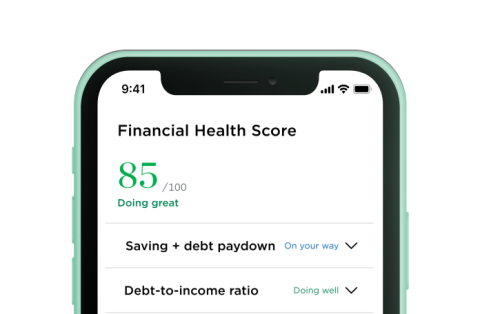401(k): What It Is and How It Works

Many or all of the products featured here are from our partners who compensate us. This influences which products we write about and where and how the product appears on a page. However, this does not influence our evaluations. Our opinions are our own. Here is a list of our partners and here's how we make money.
The investing information provided on this page is for educational purposes only. NerdWallet, Inc. does not offer advisory or brokerage services, nor does it recommend or advise investors to buy or sell particular stocks, securities or other investments.
What is a 401(k)?
A 401(k) plan is a tax-advantaged retirement account designed to help people prepare for retirement. The most common type of plan is a traditional 401(k), which is offered through an employer to employees who can then contribute part of their paycheck to be invested in the account. While not required, many employers match a percentage of employee contributions.
Like other retirement plans, the IRS adjusts 401(k) contribution limits periodically. In 2024, individuals can contribute up to $23,000 in 2024 ($30,500 for those age 50 or older).
» Estimate how your 401(k) plan will grow with our 401(k) calculator.

on Capitalize's website
How does a 401(k) work?
A 401(k) plan works by investing employee contributions and employer matches, if offered, over time. After enrolling in your 401(k) plan, you may be able to select your investments — typically target-date funds and other mutual funds — based on what’s offered by your employer’s plan provider.
» More on how to invest your 401(k) plan.
The two main types of 401(k) plans are traditional and Roth, and they are differentiated by their tax advantages. Depending on the type of 401(k) plan you choose, you could get the tax benefits when you contribute the money (traditional) or when you make withdrawals in retirement (Roth). While traditional 401(k) plans are more common, many employers now offer Roth 401(k)s as well.
» A step-by-step guide on how to set up your 401(k)
Traditional 401(k)
Contributions to a traditional 401(k) plan are taken out of your paycheck before the IRS takes its cut, and your money grows tax-free.
Once you invest in the 401(k), the money is protected from taxation. This is true for both traditional and Roth 401(k)s. As long as the funds remain in the account, you pay no taxes on any investment growth: not on interest, not on dividends, and not on any investment gains.
Besides the boost to your saving power, pretax contributions to a traditional 401(k) have another benefit: They lower your total taxable income for the year.
But the tax-repellent properties of the traditional 401(k) don’t last forever. Remember that tax deduction on the money you contributed to the plan? Eventually the IRS comes back around to take a cut. In technical terms, your contributions and the investment growth are tax-deferred — put off until you start making withdrawals from the account in retirement. At that point, you’ll owe income taxes.
Traditional 401(k)s have one more caveat: after a certain age, account holders must take required minimum distributions, which aren’t required with a Roth 401(k).

Roth 401(k)
If your employer offers a Roth 401(k) — and not all do — you can contribute after-tax income and your distributions will be tax-free in retirement.
The Roth 401(k) offers the same tax shield as a traditional 401(k) on your investments when they are in the account: You owe nothing to the IRS on the money as it grows. But, unlike with qualified withdrawals from a regular 401(k), with a Roth you owe the IRS nothing when you start taking qualified distributions as long as you are 59 1/2 and have held the account for five years or more.
That because you’ve already paid your taxes since your contributions were made with post-tax dollars. And any income you get from the account — dividends, interest or capital gains — grows tax-free. When you meet the requirements for a qualified withdrawal, you and Uncle Sam are already settled up.
» Choosing between the two? Here’s more on traditional vs. Roth 401(k) plans.
What are the pros and cons of a 401(k)?
One benefit of a 401(k) plan is that it offers higher annual contribution limits than individual retirement accounts (IRAs). The 401(k) plan max is $30,500 for those 50 and older. in 2024 The IRA tops out at $8,000 annually for those 50 and up in 2024.
Another pro is that many employers offer that matching 401(k) contribution we talked about earlier, which means free money going into your retirement account.
Some disadvantages of 401(k) plans are that they often offer a more limited selection of investments, and generally have higher fees than IRAs.
That said, you can have both an IRA and a 401(k) as part of your retirement strategy if you want.
» Interested in an IRA? See our picks for the best IRA accounts.

Get a custom financial plan and unlimited access to a Certified Financial Planner™
NerdWallet Advisory LLC

What are the 401(k) withdrawal rules?
To make a qualifying withdrawal from a traditional 401(k), you must be at least 59 1/2, have a qualifying disability, or qualify for a hardship withdrawal. If you don't meet these requirements, you may face a 10% early withdrawal penalty, plus you'll have to include your withdrawal as part of your income when you file taxes.
As of January 2024, plan participants can make a hardship withdrawal for emergency expenses of up to $1,000 per year without paying the 10% penalty. If the money isn't repaid within three years, however, no additional emergency distributions are allowed over those three years.
Still, in most cases, an early 401(k) withdrawal will still trigger taxes, and leave less money in the account to invest over time.
» Dive deeper: Get more details on 401(k) withdrawal rules
Once you reach age 73, taking withdrawals from your traditional 401(k) stops being a choice. You must begin making required minimum distributions, unless you're still working and choose to defer until retirement.
You are allowed to withdraw more than the minimum, and the distributions are included as part of your taxable income for the year.
» How do you stack up? See the average 401(k) balance by age
Next steps:
Dive deeper into the IRA vs. 401(k) debate
Learn about 401(k) taxes on contributions and withdrawals.
What to do if you overcontribute to your 401(k).
On a similar note...







